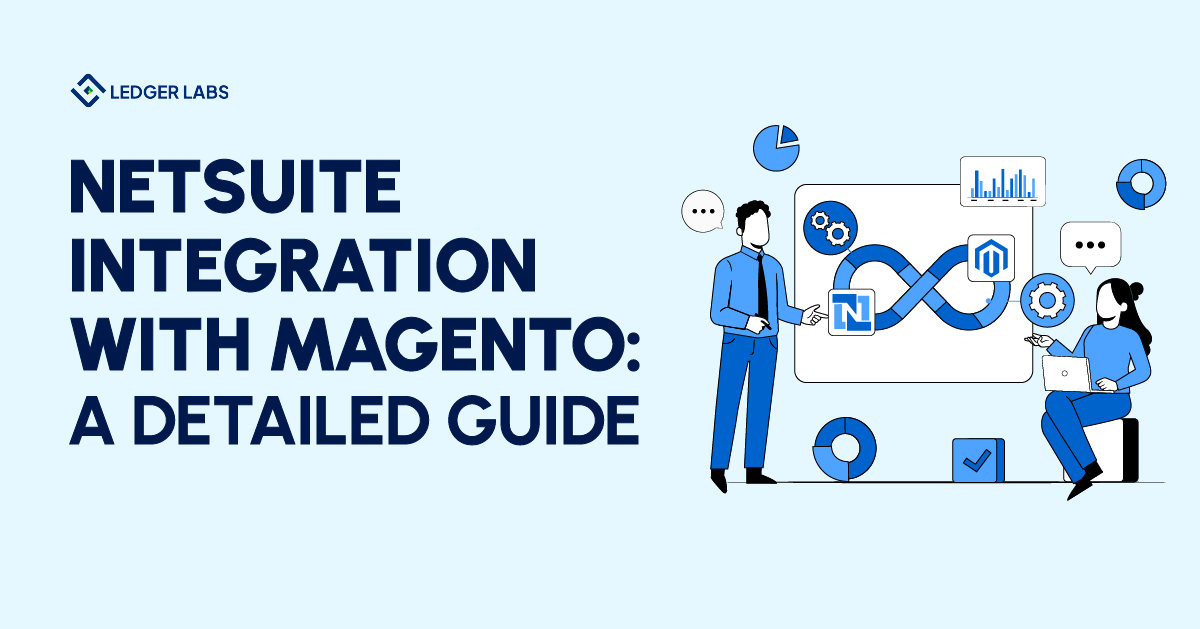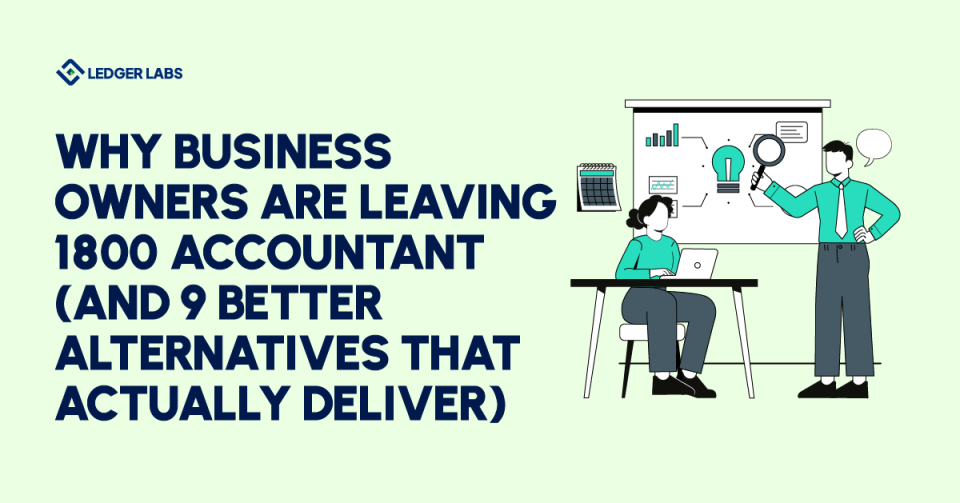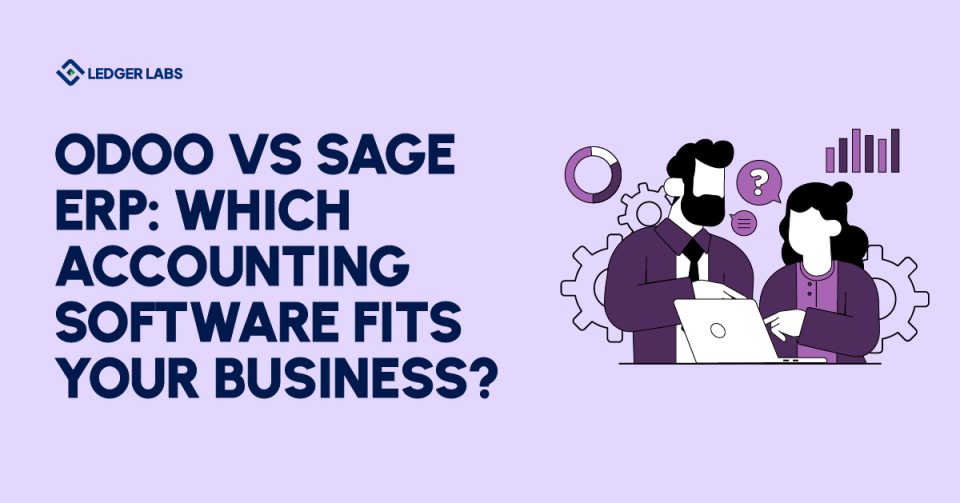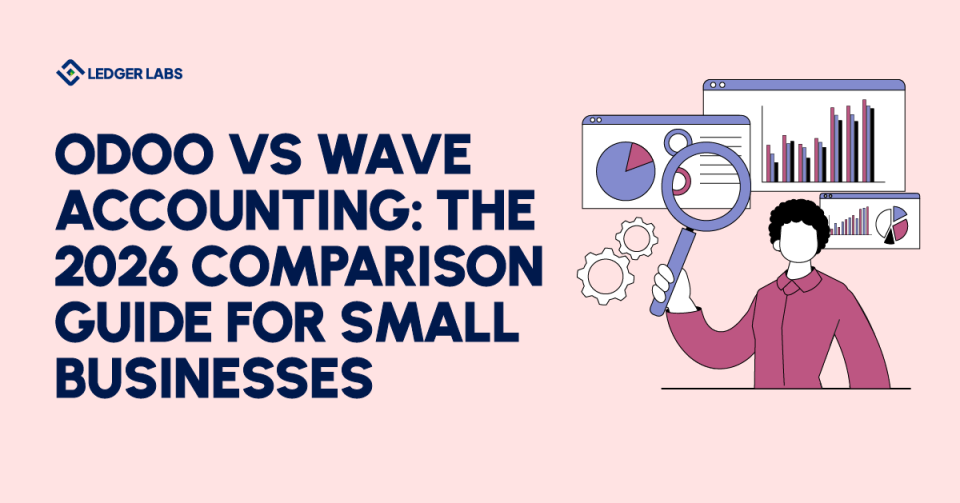Organizations succeed when there is free data flow between applications, which makes workflow and communication between business units efficient.
NetSuite applications can expand their functionality by integrating with other software applications.
It also supports integration with diverse marketplace and business ecosystems.
NetSuite integration with Magento is one such example.
Its integration allows for a centralized system that makes inventory management and business processes better.
Let’s explore the various methods of integrating NetSuite with Magento.
- Magento is an open-source e-commerce platform with an 8% market share.
- You can integrate Magento with NetSuite to centralize business data and improve workflow efficiency.
- Integrate Magento with NetSuite using extensions and plugins or use APIs for a customized solution.
- There is a five-step process to integrate NetSuite with Magento.
Understanding Magento and its features
Magento is an open-source e-commerce platform offering diverse features to enhance your online store.
It offers several customization features supporting scalability, making it an ideal choice for businesses across sizes and industries.
There are three distinct versions, each with its own set of features and advantages.
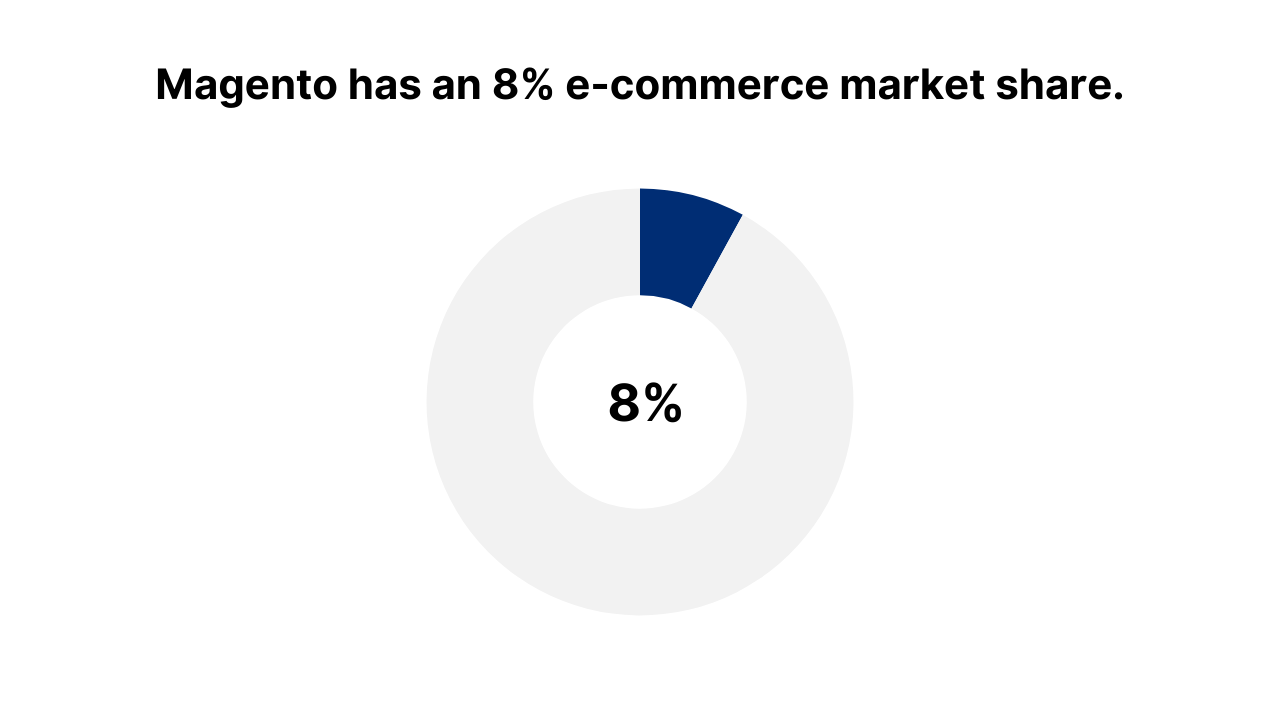
Magento has an 8% e-commerce market share, indicating that 8 out of every 100 online stores are built using it.
This Open Source platform has been downloaded over 2.5 million times and 0.6% of all the websites that use CMS are also using Magento.
Now why exactly do businesses use Magento?
Here’s why.
1. Product management
Magento has a product management system that helps you organize your product listings.
You can add new products, create categories, and include their descriptions.
This makes the customer experience on your website simpler and more efficient.
They can browse and search for products using keywords and speed up the buying journey.
2. Customizable layouts and designs
You get a wide range of customizable templates and layout themes to create a personalized experience.
There is a drag-and-drop feature that makes this process smooth.
3. Order management
Order processing is challenging for most e-commerce businesses as it involves many stakeholders.
Through Magento’s order management system, you can create invoices, pack slips, and add shipping labels.
Make this process supper efficient, speeding up order deliveries.
4. Customer management
You get a built-in customer management system that you can use to manage your customer accounts.
Use it to view customer order history and create targeted marketing campaigns.
Why should you integrate Magento and Netsuite?
NetSuite and Magento integration can automatically sync your inventory data, efficiently processing orders, customer information, and other operational data.
Not only does it help save time but it also reduces manual input, increasing data accuracy and consistency.
Three ways of integrating Magento and NetSuite
There are three ways to integrate Magento and NetSuite. You should pick the method that suits your business needs.
Magento marketplace offers extensions and plugins that can be used for integration.
Customized integration can be done using NetSuite APIs.
And the final method involves middleware, so you can use iPaas for integration.
Let’s explore each option, so you can make an informed decision.
Method 1: Extensions and plugins
Magento Community and Magento Enterprise offer extensions for integration.
This option is easy to set up as you only have to install and configure the extension.
Next, you will connect it to your Magento store and NetSuite account.
While this option is simple and easy to follow, it does have limited features and can be expensive for a small business.
Method 2: Custom integration through APIs
You need a team of developers for custom integration.
This method is complex but it offers a lot more control.
What makes it unique and challenging is the process as there’s no one route for successful integration.
Thus, you’ll use different APIs for unique purposes.
Method 3: Middleware or iPaas integration
You don’t need to worry if you don’t have a developer.
Opt for a more complete solution using iPaaS. This is an integration platform offered as a service.
It is a cloud-based platform offering multiple functionalities, like data mapping and real-time data synchronization.
Use iPaas to connect Magento with NetSuite and automate the data flow between the two platforms.
While it is comparatively more expensive than using extensions and plugins for integration, it offers more flexibility and scalability.
Integrating Magento and NetSuite – A 5-step integration process
Step 1: Find a suitable integration method
Begin by choosing the most suitable and reliable integration method. It should align with your business needs.
The three things to consider before selecting any method are as follows:
It should offer real-time data synchronization between Magento and NetSuite. It maintains accurate and updated information.
Choose a method that provides customized solutions so that you meet specific business needs.
And lastly, if you opt for an iPaaS solution, go for a service provider that has the most reliable customer support.
Step 2: Develop an extensive integration plan
No action is successful without proper strategy. Here are the key aspects to consider for a holistic strategy.
Carefully lay out the rules for data mapping and make sure they are consistent throughout and strictly implemented.
Identify the data fields you must map out on both Magento and NetSuite.
The frequency at which data synchronization will occur is also important.
Thus, before you move ahead make sure you establish that.
Delegate responsibilities to each team member so that the integration process goes smoothly.
Step 3: Map the data fields
Make the data transferring process seamless by neatly mapping out your data fields.
Step 4: Conduct thorough testing
Here’s the most important lesson: Don’t go live before conducting thorough testing in a controlled environment.
Make sure you have verified all the data, like the customer data, order details., and product information.
Identify and resolve data synchronization.
Also, evaluate the performance of the integration under a controlled environment and see whether it can handle business demands during peak season.
Step 5: Monitor performance and maintenance
Don’t think your work is done when the integration is completed.
Now the real work begins. You must evaluate the performance of this integration and see if it matches your desired KPIs.
There should be use of tools to detect errors. Simultaneously update your system and ensure all updates are finished.
You must maintain a proactive approach to address any issue that might cause disruptions.
Also Read:
5 benefits of integrating Magento with NetSuite
It’s important to know the benefits of integrating Magento with NetSuite. Let’s look at the top 5 advantages of this integration.
1. Real-time data synchronization
The best part of this integration is the automated data synchronization.
Imagine having all business data stored in one place and updated timely.
You’ll have information on inventory levels, customer data, product listings, and order processing information all in one place and synchronized in real time.
So when a customer places an order on your website, the information will immediately be updated on NetSuite.
Simultaneously your stock levels will also reflect the information on your online store. It will stop the overselling of products.
2. Better customer experience
Magento and NetSuite promote customer experience on your online store.
Anybody who visits your store will have up-to-date information regarding product availability and shipping information.
They will also have access to their order, enabling them to track it easily. What it does is it improves the experience of the customer on your website.
The higher the satisfaction, the higher the chances of gaining their loyalty.
3. Improved inventory management
Inventory management can make or break an e-commerce business.
It is one of the core functions that require your most attention.
This integration improves your inventory management, giving you accurate and real-time updates on your stock.
It highlights dead stock and prevents understocking and overstocking.
This is a huge advantage as you can manage your costs and improve overall cash flow with real-time inventory level updates.
4. Effective financial insights
Financial management is the core that truly takes your business forward.
Budget bookkeeping and accounting issues negatively influence your sales and disturb your inventory management.
Connecting Magento with NetSuite will solve this problem.
You will have a centralized system that tracks orders and sales from Magento and reflects their impact on your books and account.
In addition, you have real-time updates and accurate financial reports for informed decision-making.
The entire process is automated, making financial management simple and quick
5. Workflow efficiency
A Magento and NetSuite integration improves your workflow, reducing manual input and implementing NetSuite AP automation for time and cost-saving purposes.
In addition, you have a centralized system with real-time updates through data synchronization.
Whether it is order placement on your online store or order processing and handling shipment requirements, all is managed efficiently.
Whether it is inter-departmental collaboration or pattern tracking, it makes everything available.
The bottom line
NetSuite integrations can support business growth by improving workflow efficiencies and reducing manual input.
An integration of Magento and NetSuite centralizes data and allows real-time data synchronization.
There are three ways to integrate NetSuite and Magento and businesses should choose a method that suits their specific business needs.
Once you’ve selected a method, it is important to follow the five key steps to ensure successful integration.
We at Ledger Labs are your Netsuite experts who help businesses with accounting needs through advanced technology.
Book a consultation appointment with us today and learn how we can help you with this integration.


